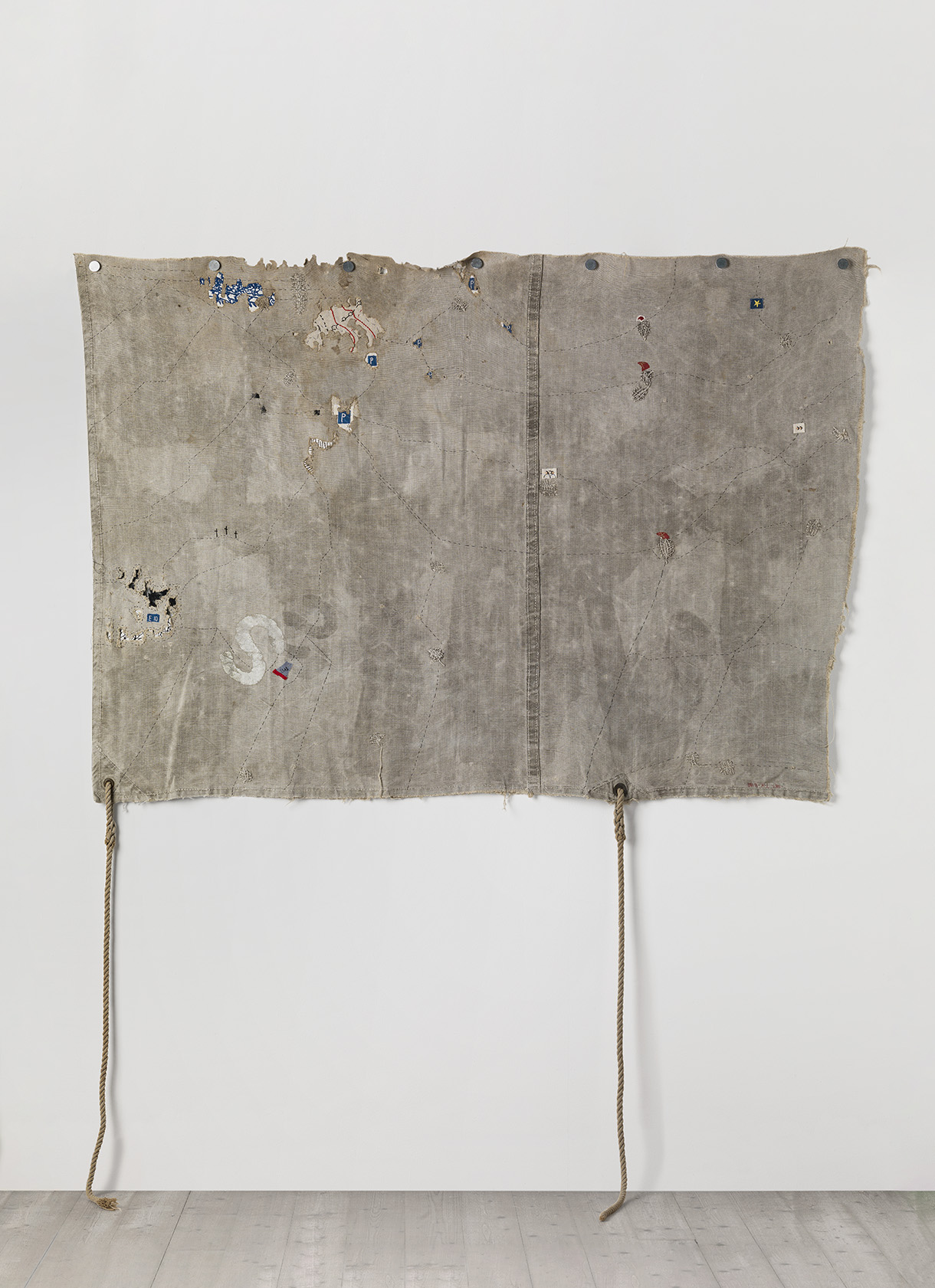
Britta Marakatt-Labba, Johtin I, 2016 [The Move I] Moderna Museet, Stockholm. Photo: Prallan Allsten/Moderna Museet © Britta Marakatt-Labba/Bildupphovsrätt 2025
The Move I, 2016
Britta Marakatt-Labba
Runtime: 03:19
Britta Marakatt-Labba: This work is about an old canopy fabric that I found. I thought, I’ll just throw it into a washing machine and see what happens. And what happened was that it came out beautifully crackled. It immediately made me think of the relocation of Kiruna’s old town centre, because when you extract iron ore, you are left with craters. And I wondered: “What will happen to the people and all the houses that have to be moved from the old centre? Clearly, it hurts just as much to move a few kilometres as it does to move several miles”. As this was a kind of forced relocation of people, and no one really knew where the boundaries of this relocation would be drawn.
Then I began to take note of these parking spaces. At that time, many older people were thinking: “Where will I be parked? Will I still be able to live and remain in one place, or will I be parked here, near the new town centre – which is, in fact, the cemetery?”. So I have incorporated all of these aspects into this image. The strings hanging down at the bottom represent the roads that are being moved and that lead to the new centre. The main culprit in this whole drama, as I would call it, is LKAB. It all starts there, with the mining company’s abbreviation: L-K-A-B.
I have also chosen to embroider women wearing horned hats or caps, because these women possess great strength, the ones who wear these caps, I mean. Because we stand up for ourselves, we press on, horns forward, and we do not yield. These caps, called ládjogahpir in Sámi, were banned when Christianity arrived in Sápmi, because one could not walk around wearing a cap with horns at the front. It was considered the work of the devil. But the women who wore them, did so with dignity, they possessed wisdom. They carried all of this within themselves. However, once the caps were banned, what happened was that the women began to wear the horn on the back of the cap instead. And that’s what we saw throughout the 1960s, that a lot of women had caps that featured horns that were moved towards the back. In this way, the authorities could no longer recognise that the women were still wearing horned caps, because now the horn was more horizontal instead of being forward and projecting upwards. That was the wisdom in it all, and If one considers “The Move I”, one can also see that when something has been moved, there will be no visible trace of what has been left behind. The relocation was done with such care because the idea was that nature would reclaim what had been left behind. And it is the same with caps as well – and that’s what was so clever about it, that no one could read the signs. You could no longer tell that a woman had once walked here while she was wearing a horned cap.